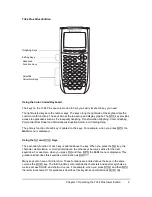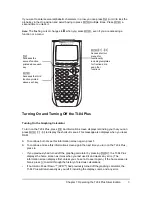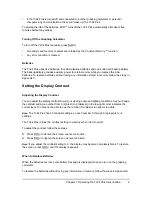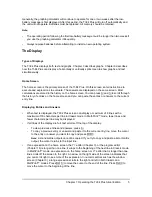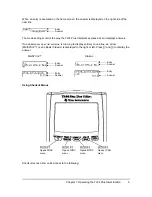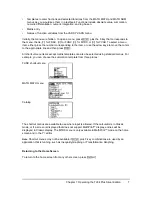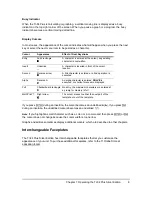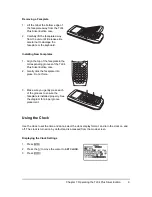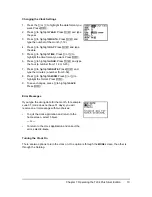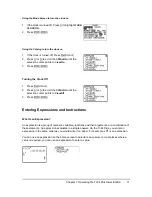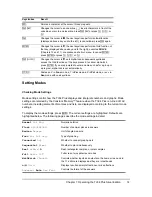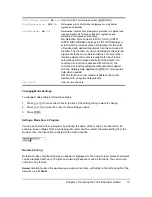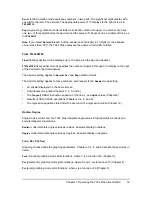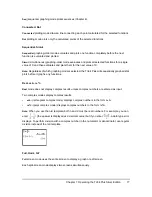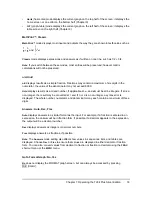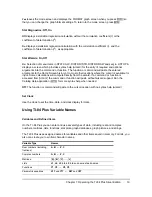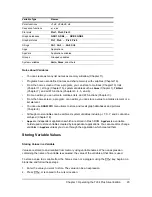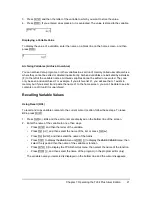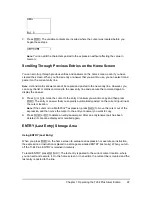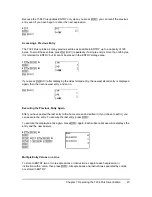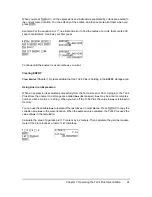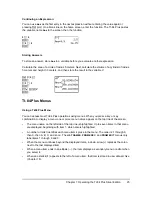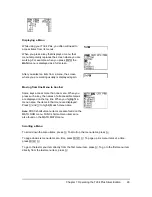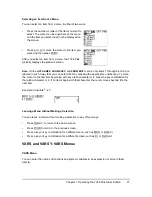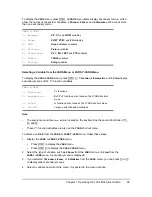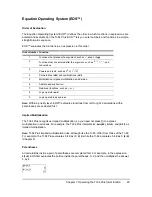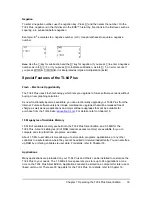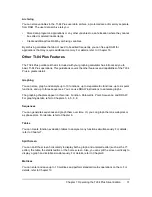
Chapter 1: Operating the TI-84 Plus Silver Edition
16
Sci
(scientific) notation mode expresses numbers in two parts. The significant digits display with
one digit to the left of the decimal. The appropriate power of 10 displays to the right of
å
, as in
1.234567
â
4
.
Eng
(engineering) notation mode is similar to scientific notation. However, the number can have
one, two, or three digits before the decimal; and the power-of-10 exponent is a multiple of three, as
in
12.34567
â
3
.
Note:
If you select
Normal
notation, but the answer cannot display in 10 digits (or the absolute
value is less than .001), the TI-84 Plus expresses the answer in scientific notation.
Float, 0123456789
Float
(floating) decimal mode displays up to 10 digits, plus the sign and decimal.
0123456789
(fixed) decimal mode specifies the number of digits (0 through 9) to display to the right
of the decimal for decimal answers.
The decimal setting applies to
Normal
,
Sci
, and
Eng
notation modes.
The decimal setting applies to these numbers, with respect to the
Answer
mode setting:
•
An answer displayed on the home screen
•
Coordinates on a graph (Chapters 3, 4, 5, and 6)
•
The
Tangent(
DRAW instruction equation of the line, x, and
dy/dx
values (Chapter 8)
•
Results of CALCULATE operations (Chapters 3, 4, 5, and 6)
•
The regression equation stored after the execution of a regression model (Chapter 12)
Radian, Degree
Angle modes control how the TI-84 Plus interprets angle values in trigonometric functions and
polar/rectangular conversions.
Radian
mode interprets angle values as radians. Answers display in radians.
Degree
mode interprets angle values as degrees. Answers display in degrees.
Func, Par, Pol, Seq
Graphing modes define the graphing parameters. Chapters 3, 4, 5, and 6 describe these modes in
detail.
Func
(function) graphing mode plots functions, where Y is a function of X (Chapter 3).
Par
(parametric) graphing mode plots relations, where X and Y are functions of T (Chapter 4).
Pol
(polar) graphing mode plots functions, where
r
is a function of
q
(Chapter 5).

